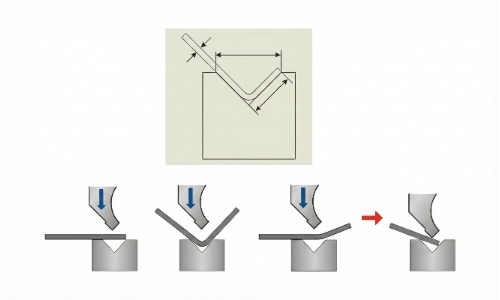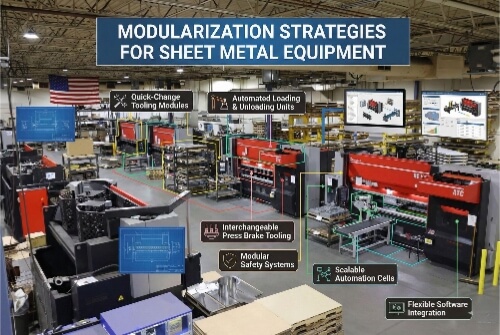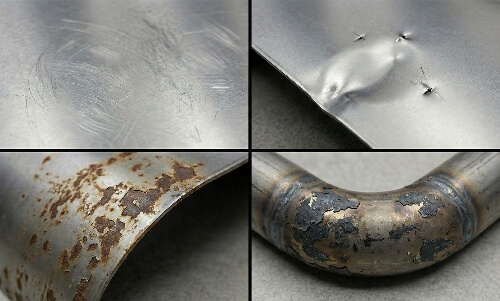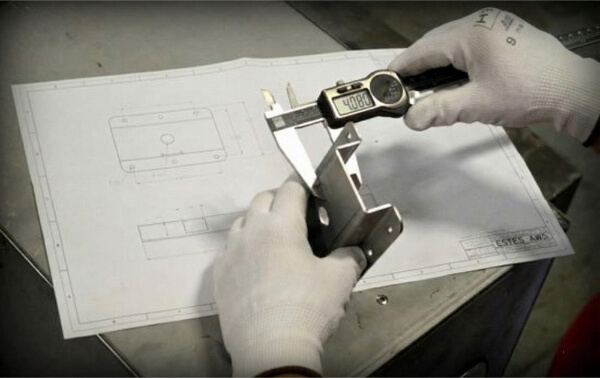When facing complex machining tasks, finding the right tool can be challenging. Machinists often struggle with surface finish quality, precision issues, and cost-effectiveness when working on large flat surfaces. Fly cutters solve these problems by providing superior surface finishes, higher precision, and better cost efficiency than many alternatives.
Want to know which fly cutter is right for your project? This guide covers everything from basic types to advanced applications.
What Is a Fly Cutter?
A fly cutter is a rotary cutting tool that attaches to a milling machine spindle and rotates to remove material. The cutting bit extends from the tool body and cuts in an arc pattern with each rotation, creating a smooth, flat surface.
Fly cutters mount a cutting tool at a set distance from the rotation center. As the spindle turns, this offset cutting edge removes material in a circular path. The cutting action happens only when the edge contacts the workpiece, interrupting the cutting process.
The tool creates flat surfaces because the cutting edge is set at a consistent height. Each pass removes a thin material layer, and the milling machine’s feed movement creates a flat surface. This process is sometimes called “fly cutting” because of the cutting edge’s sweeping motion.
Components of Fly Cutter
A typical fly cutter consists of several key parts that work together:
- Body/Arbor: The primary structure that attaches to the milling machine spindle
- Cutting Arm: The extension that holds the cutting bit at the proper distance from the center
- Cutting Insert/Bit: The actual cutting edge (often made of HSS or carbide)
- Set Screws: Used to secure and adjust the cutting bit position
- Shank: The portion that fits into the machine spindle or collet
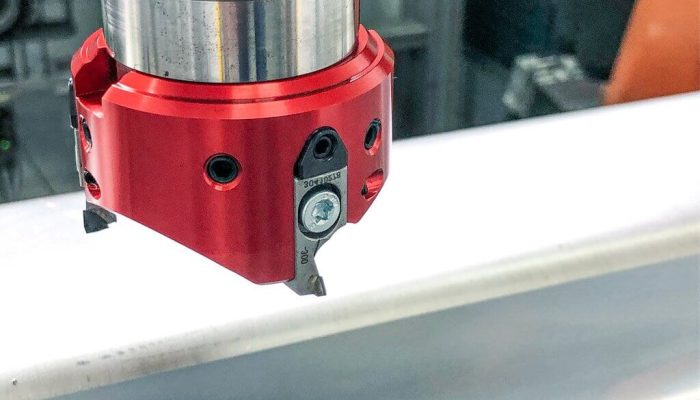
Types of Fly Cutters
Fly cutters come in different styles, each designed for specific tasks. Here’s a breakdown of the most common types:
Point Cutter
A point cutter has a single cutting edge. It’s simple and works well for light-duty tasks. This type is excellent for small projects where precision is essential. It’s easy to set up and use, making it a good choice for beginners.
Rotary Cutting Tool
This type uses a rotating motion to cut through materials. It’s faster and more efficient than a point cutter. Rotary cutting tools are ideal for larger projects and more rigid materials. They can handle heavy-duty tasks with ease.
Rotary Carving Tool
Rotary carving tools are designed for detailed work. They’re perfect for creating intricate designs or patterns on surfaces. These tools are often used in woodworking or artistic projects. They offer precision and control for delicate finishes.
Fly Cutter Specifications
Selecting the correct fly cutter requires understanding several key specifications. These details determine which tool will work best for your specific machining needs.
Cutter Diameter and Cutting Range
The diameter of a fly cutter refers to the circular path created by the cutting edge as it rotates. This dimension directly affects the width of the cut in a single pass.
Most fly cutters range from 1 to 8 inches in diameter, with 2-3 inch models being the most common for general machining. Larger diameters cover more area per pass but require more powerful machines and slower speeds.
The cutting range refers to how much material the tool can effectively remove. For most fly cutters:
- Light cuts: 0.005″ to 0.010″ depth per pass
- Medium cuts: 0.010″ to 0.030″ depth per pass
- Heavy cuts: 0.030″ to 0.060″ depth per pass (only for robust machines)
Larger diameter cutters typically require lighter depths of cut to maintain stability and avoid excessive tool pressure.
Shank Size and Compatibility
The shank is the portion of the fly cutter that fits into your milling machine’s spindle or collet. Common shank sizes include:
- 3/8″ – For small hobbyist machines
- 1/2″ – Standard for most bench-top mills
- 3/4″ – Common for larger machines
- R8, MT2, MT3 – Direct spindle mounting options
Always check your machine’s specifications before purchasing a flycutter. A shank that’s too small can cause slipping during cutting, while one that’s too large simply won’t fit your machine.
Some fly cutters feature interchangeable shanks, allowing you to use the same cutting head on different machines. This flexibility can be valuable in shops with multiple milling machines.
Surface Finish and Tolerance Capabilities
Fly cutters produce excellent surface finishes, often superior to those achieved with multi-flute end mills.
Typical surface finish capabilities:
- Roughing: 125-250 microinches Ra
- General purpose: 63-125 microinches Ra
- Finishing: 32-63 microinches Ra
- Precision finishing: 16-32 microinches Ra
The tolerance capabilities of fly cutters are primarily determined by the machine’s precision rather than the tool itself. However, a well-set-up fly cutter can help achieve the following:
- Standard machining: ±0.005″
- Precision machining: ±0.001″
- High precision: ±0.0005″
Fin quality factors include cutting speed, feed rate, bit sharpness, and machine rigidity.
Speed and Feed Rate Recommendations
Proper speed and feed rates are crucial for successful fly cutting. Because the cutting action is intermittent, these parameters differ from those used with standard end mills.
General speed recommendations:
- Aluminum: 500-1000 RPM
- Brass/Bronze: 400-800 RPM
- Mild Steel: 300-600 RPM
- Stainless Steel: 200-400 RPM
- Cast Iron: 250-500 RPM
Feed rates typically range from 1 to 5 inches per minute, depending on the material, depth of cut, and desired finish. Start with slower speeds and feeds, then adjust based on results.
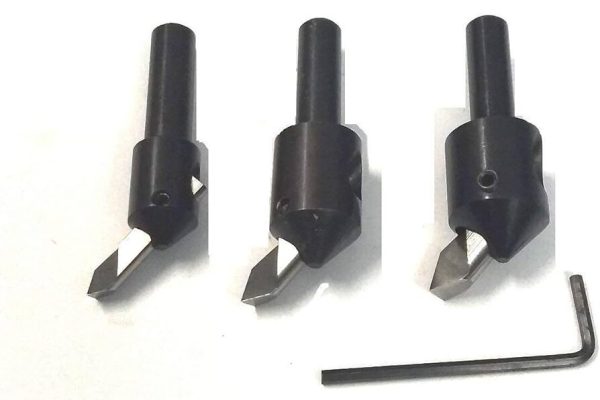
How do Fly Cutters Differ from Face Mills and End Mills?
Fly cutters, face mills, and end mills are all used in machining but serve different purposes. Here’s how they compare:
Number of Inserts
- Fly Cutter: Typically has one or two cutting edges. This makes it simpler and more cost-effective.
- Face Mill: Uses multiple inserts (often 4 to 8). This allows for faster material removal.
- End Mill: Usually has 2 to 6 flutes. It’s designed for detailed work like slotting or contouring.
Finishing Quality
- Fly Cutter: Produces smooth, flat surfaces with a fine finish. Ideal for finishing operations.
- Face Mill: It creates good finishes but may not be as smooth as a fly cutter. It’s better for roughing.
- End Mill: Offers precise finishes but is better suited for detailed cuts rather than large flat surfaces.
Cutting Requirements
- Fly Cutter: Works well for light to medium-duty tasks. Best for flat surfaces and finishing.
- Face Mill: Handles heavy-duty tasks and removes material quickly. Great for large surfaces.
- End Mill: Designed for intricate cuts, slots, and contours. It’s not ideal for large, flat areas.
Cost
- Fly Cutter: Generally the most affordable option. Simple design and fewer parts keep costs low.
- Face Mill: More expensive due to multiple inserts and complex construction.
- End Mill: Costs vary based on size and number of flutes. Specialized designs can be pricey.
Applications of Fly Cutters
Fly cutters are versatile tools used in various machining tasks. Here’s how they’re applied in different scenarios:
General Milling Operations
Fly cutters are great for basic milling tasks. They can flatten surfaces, remove material, and create smooth finishes. Their simplicity makes them easy to use for everyday projects.
High-Precision Surface Finishing
Fly cutters excel at projects requiring fine finishes. They produce flat, smooth surfaces with minimal tool marks, making them ideal for parts that need a polished look or tight tolerances.
Large-Scale Machining
Fly cutters can handle large workpieces. Their wide cutting range allows them to cover significant areas in fewer passes, saving time and effort in large-scale operations.
Fly Cutters in CNC Machining
Fly cutters are used in CNC machines for precise, automated tasks. They work well for creating flat surfaces and finishing operations. Their adaptability makes them a valuable tool in CNC setups.
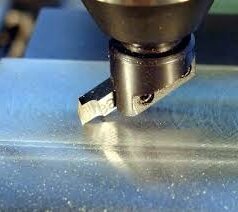
How to Use a Fly Cutter Effectively?
Using a fly cutter well requires attention to setup, speed, and maintenance. Here’s how to get the best results:
Proper Tool Setup and Mounting
Ensuring Secure Installation
Always tighten the set screws firmly to hold the cutting tool in place. A loose tool can cause accidents or poor finishes. Double-check the shank size to ensure it fits your machine’s spindle correctly.
Avoiding Imbalance Issues
An unbalanced fly cutter can cause vibration and uneven cuts. Make sure the cutting tool is centered and the weight is evenly distributed. If needed, use a balancing tool to check and adjust.
Adjusting Speed and Feed Rate
Best Practices for Various Workpiece Materials
Softer materials like aluminum need higher speeds and lighter cuts. More complex materials like steel require slower speeds and more gradual feed rates. Always refer to the manufacturer’s guidelines for specific materials.
Fine-Tuning Parameters for Optimal Performance
Start with recommended settings, then adjust based on the results. If the finish is rough, reduce the feed rate. If the tool is overheating, lower the speed. Small changes can make a big difference.
Preventing Common Machining Issues
How to Reduce Vibration and Chatter
Vibration can ruin your finish and damage the tool. Ensure the workpiece is clamped securely. Use a fly cutter with a balanced design. If vibration persists, check for worn or loose parts.
Tool Wear Troubleshooting and Maintenance
Inspect the cutting edge regularly. Dull tools cause poor finishes and increase wear on the machine. Sharpen or replace the cutting tool as needed. Clean the tool after each use to prevent buildup.
Conclusion
Fly cutters are versatile, cost-effective tools that create smooth, flat surfaces. They are ideal for general milling, high-precision finishing, and large-scale machining. With proper setup, speed adjustments, and maintenance, fly cutters deliver consistent, high-quality results.
If you’re looking for high-quality fly cutters or need expert advice on choosing the right tool, we’re here to help. Contact us today to discuss your project requirements and discover how we can support your machining success.
Hey, I'm Kevin Lee

For the past 10 years, I’ve been immersed in various forms of sheet metal fabrication, sharing cool insights here from my experiences across diverse workshops.
Get in touch

Kevin Lee
I have over ten years of professional experience in sheet metal fabrication, specializing in laser cutting, bending, welding, and surface treatment techniques. As the Technical Director at Shengen, I am committed to solving complex manufacturing challenges and driving innovation and quality in each project.

